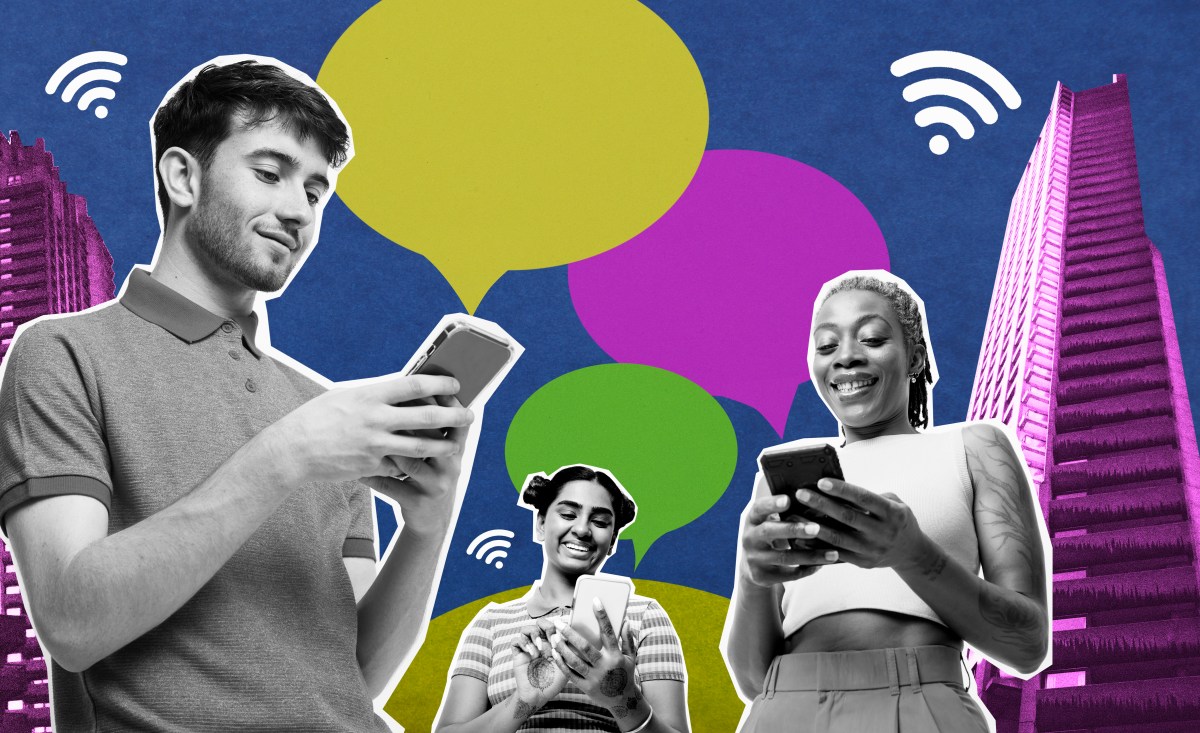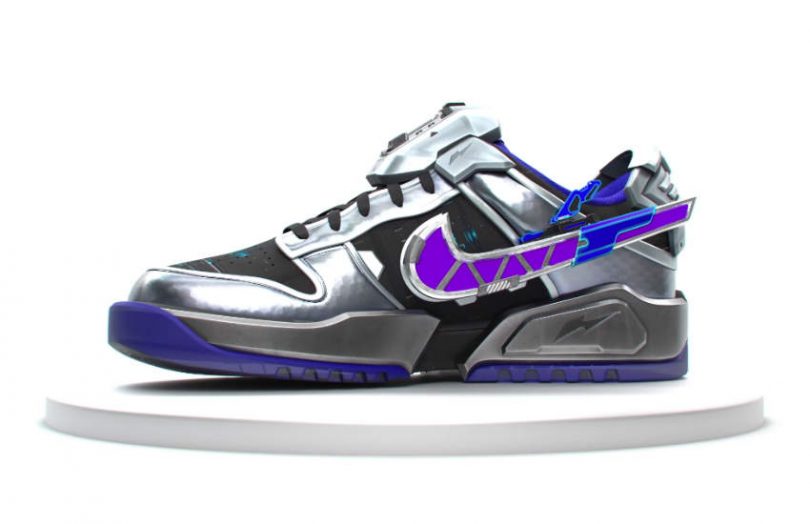Interest in Web3, NFTs and the Metaverse skyrocketed in 2022, with brands like Meta pledging $10B to developing its own Metaverse, while more than $23B in venture capital money was invested into Web3 this year despite market downturns. These signals indicate that there’s more to decentralised technologies, such as Web3, than the headline hype. This article provides an overview of what Web3 means for brands, including benefits, challenges and considerations when getting started. For context on Web3, you can refer to this article.
What’s wrong with the current version of the internet (i.e. Web 2.0)?
Kevin Kelly, a digital visionary and author of 1000 True Fans had a vision for the internet. His vision was that the internet would be the ultimate matchmaker where any brand or creator could find their 1000 true fans and earn enough income to sustain themselves.
However, in 2007, this internet took a detour. Centralised platforms, like Facebook, became the primary way for creators and fans to connect. They embedded a pay-to-play model to dictate creator visibility, while keeping most of the revenue for themselves.
Some of the key challenges of the current version of the internet, for brands and creators:
- Rising customer acquisition costs, with brands experiencing a 60% increase in the last 5 years.
- Highly competitive landscape with new privacy updates from Google, Apple and Meta, making it harder for brands to collect data and provide personalised experiences.
- Non-portable virtual communities on highly extractive platforms.
By contrast, Web3 technologies can allow brands to reinvigorate their customer experiences by allowing their customers to own a piece of the brand experience. This shifts customers from passive recipients to participative, equity-driven partners on a creative playing field.

What does Web3 marketing mean for brands?
Attract and retain customers more efficiently, by creating deep incentives to strengthen loyalty.
Acquiring a new customer can cost five times more than retaining an existing customer. Increasing customer retention by 5% can increase profits from 25-95%.
Non-fungible tokens (NFTs) allow customers to own a piece of the brand experience. Brands can leverage these NFTs to create hyper engaged communities, mobilise customer actions around key activities and encourage future product development.
Shopify has said with the death of third-party cookies, brand communities become key to building trust and brand equity, decreasing customer support costs and improving customer retention.
Lacoste launched its ‘Undw3’ NFT project, releasing 11k+ NFTs, which gave holders access to a token-gated community, where they could play a role in the creative direction of ‘Undw3’ and get access to unique products. Lacoste asked community members to vote on the aesthetic of physical merchandise and complete gamified challenges that focused on increasing brand reach. They then rewarded highly engaged community members with exclusive titles that they could leverage to gain additional privileges.
Customers today are interested in creating a partnership with the brands they love. Brands can take a page from Lacoste’s playbook to create direct relationships with their customers, turn passive customers into active participants and increase customer lifetime value.
Gain better brand recognition
Citi has reported that the Metaverse will be a $13 trillion market by 2030. This growing market has drawn in brands that are looking to experiment, capitalise off the opportunity and deepen their expertise before their competitors enter the race.
Nike made headlines by becoming one of the most profitable fashion brands in Web3. Earlier this year, Nike collaborated with virtual fashion studio RTFKT to launch their ‘Cryptokicks’ collection (i.e. 20k NFT sneakers).
Some powerful statistics from their launches:
- They generated $185.3 million in sales from NFTs
- They generated $1.3 billion in secondary market volumes from 68,000 secondary transactions.
- They attracted 200k+ members into their brand community.

Through secondary trade opportunities, Nike was able to reduce the cost of acquiring additional customers that were brought in through the ~70k secondary transactions and generate $1.3 billion in secondary revenue. Samuel van Deth, Marketing Director at Oracle, says that the money Nike made was not the primary reason to keep making NFTs. He argues,
“The influence on overall brand recognition, engagement, loyalty, and customer lifetime revenue is likely the most essential reasons why firms are investing [in Web3].”
Build richer Web3 marketing data on customers to offer highly personalised experiences
80% of consumers are more likely to make a purchase from a brand that provides personalised experiences, but some of the biggest challenges brands deal with today is difficulty of data tracking (as support for third-party cookies is phased out) and real-time analysis to drive personalised experiences for customers.
This diagram depicts how data collection and driving personalised customer experiences could vary between Web2 vs. Web3.
In addition to email addresses, brands can capture crypto wallet addresses. The power for a brand comes from connecting those wallet addresses to customer relationship management systems (CRMs) to drive more targeted advertising, e-commerce sales and creating personalised touches at scale.
By looking at a crypto wallet address, a brand gets a detailed look into an individual’s purchasing behaviour, including how much they’ve previously spent and which other brands they’ve purchased from. As more people start transacting on the blockchain, a user’s crypto wallet will act as a key and core to their online identity.
Meta recently launched their “digital collectibles” feature on Instagram, so creators can create and sell NFTs by connecting their crypto wallet to the app. Instagram has more than 1 billion active monthly users. By accessing users’ digital wallet addresses, Meta will be able to see every on-chain transaction their users make. As more data moves on-chain, Meta will be able to use this information to drive highly accurate and individualised ads and rewards for users.
Reinvent omni-channel customer experiences to engage customers, anytime and anywhere going forward.
Companies with extremely strong omnichannel customer engagement retain on average 89% of their customers, compared to 33% for companies with weak omnichannel customer engagement. This has become truer in the post-pandemic era.
During the pandemic, the Australian Open (AO) saw a significant drop in its attendance rates, contributing to a net-loss of over $100M for the tournament.
In 2022, the Australian Open embarked on an innovative approach to reconnect with global fans, enabled by Web3. They launched:
- 6k+ NFTs which gave owners the opportunity to own a physical piece of the AO and additional benefits like merchandise and limited-edition wearables.
- A metaverse tennis experience (via Decentraland, a 3D virtual reality platform) that fans could use to explore the AO precinct from wherever they were in the world, complete challenges and interact with other fans.
Talking about this launch, Ridley Plummer, Metaverse Manager at the AO, said “The AO leveraged the metaverse to allow customers to choose their own adventure. They could visit the grand slam oval, practice village, press conference room or even the gym (i.e. places you can’t visit in real life)”.
The AO created a world-first sporting experience where customers could put themselves into the AO narrative and experience the AO brand multiple times, each time in a new and unique way, and in ways not possible in the physical realm.
There has to be careful thought about the user journey within metaverse experiences. Brands need to think about how they will engage their consumers, ensure they’re having fun and creating a memorable experience for them, so they return and stay committed to the brand.
Appeal to emerging cohorts of spenders
Gen Z and Alpha are changing the face of retail. These digitally-native generations are used to shopping across all formats. They’re used to experiencing brands every step of the way and at every moment. As a result, there is a need for brands to meet these consumers where they are.

There’s a reason why brands like Gucci, Ralph Lauren and Walmart have all created metaverse experiences in platforms like Roblox (a gaming platform), where 67% of users are under the age of 16 and 82% under 24. In fact, Gen Z already spend 15% of their discretionary income in the metaverse, which is expected to climb to 20% in the next 5 years, according to VICE Media group.
These statistics highlight the need for brands to provide Gen Z and Alpha with the tools to engage with brands in a highly collaborative manner and receive seamless and personalised experiences. Web3 technologies like the Metaverse and NFTs, allow brands to build community and attract new audiences in a much more visual, immersive and connected way.
“Engage with Generation Z through next-gen advisory boards. If the average age of your board is over 50 and that of your employees and customers in the 20s or 30s, are you really in touch with the wallets driving the future of your business?”
Forbes, 2022
So how can brands get started?
- Start with education
Some ways to get started:
- Leverage crypto-hubs like Twitter, LinkedIn and Reddit, where key opinionated leaders express their forward thinking views and share thought leadership.
- Tap into podcasts and newsletters to deepen your learning. Here are a few recommendations.
- Examine brand case studies across industries, and distil key learnings for the brand.
2. Stay true to your brand DNA
Your brand DNA is the essence of your identity as a business, and your Web3 strategy needs to reflect that. Consider your purpose, customers, what they value and how you can add value to them in the long term.
When designing your go-to-market strategy, technology stack and the tools you’ll leverage, ensure consistency with core brand values. For example, Starbucks recently announced their NFT powered loyalty program, Starbucks Odyssey. Recognising that the audience of their highly successful rewards program didn’t resonate with blockchain technology, they adopted an entirely custodial user experience for their program.
3. Go-to-market approach
Many brands have made Web3 plays for their business, and have done it in one of two ways:
- Partnering with a well known Web3-centric brand to launch (e.g. Nike & RTFKT, AO & Decentraland).
- Conducting a standalone launch (e.g. Starbucks).
Explore the pros and cons of each of these approaches, with the brand in mind.
4. Start by experimenting with a portion of your business. Define clear metrics for the experiment.
Use your Web3 strategy as an opportunity to test and build capability. Outline key metrics for success to understand the limits of the technology, customer appetite and behaviours. Following the launch, conduct a post implementation review to outline key learnings before you scale.
5. Take a long-term mindset
Early adopters of Web3 technologies will have the unique window of opportunity to understand customer behaviours and conversations to support future commerce models and product development.
Brands need to think about how they’ll bring value to their communities, engage customers and create innovative experiences that foster their loyalty. They will also need to become dynamic and agile to keep up with this technology.
Web3 technology is nascent, with a long way to go in regards to security, regulation and user experience. Despite that, brands are doubling down on Web3 technologies and accelerating its permeation into our everyday lives. With today being paralleled to the 1995 of the present day internet, brands have a rare moment to take action, learn and ask questions without a great risk of missing out.
So is Web3 the future? What’s your verdict?



